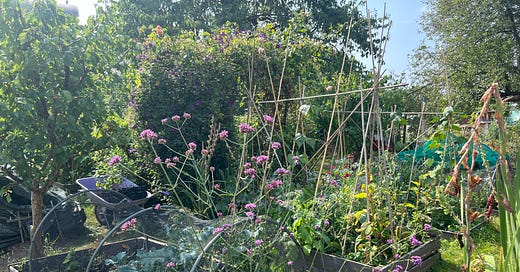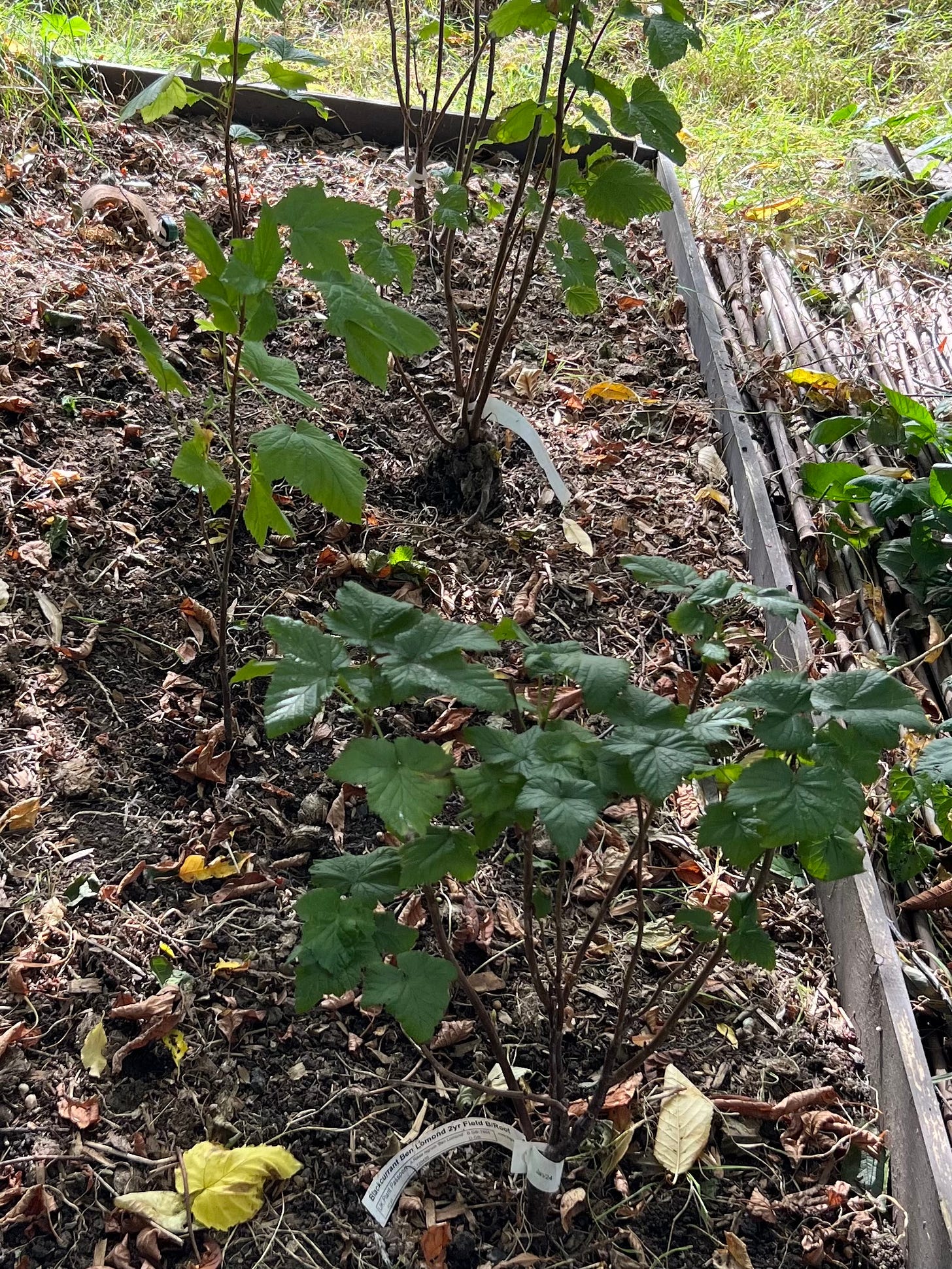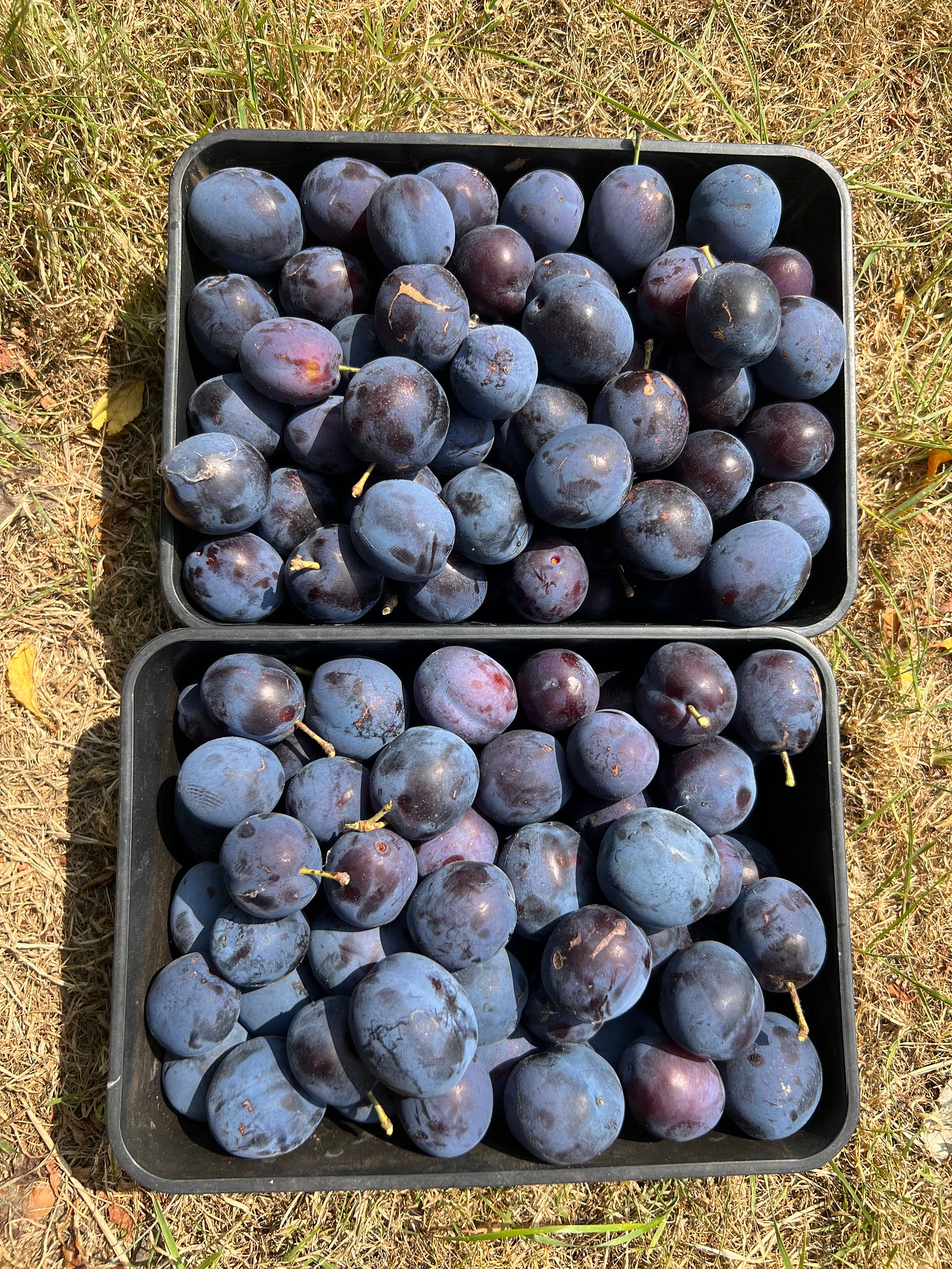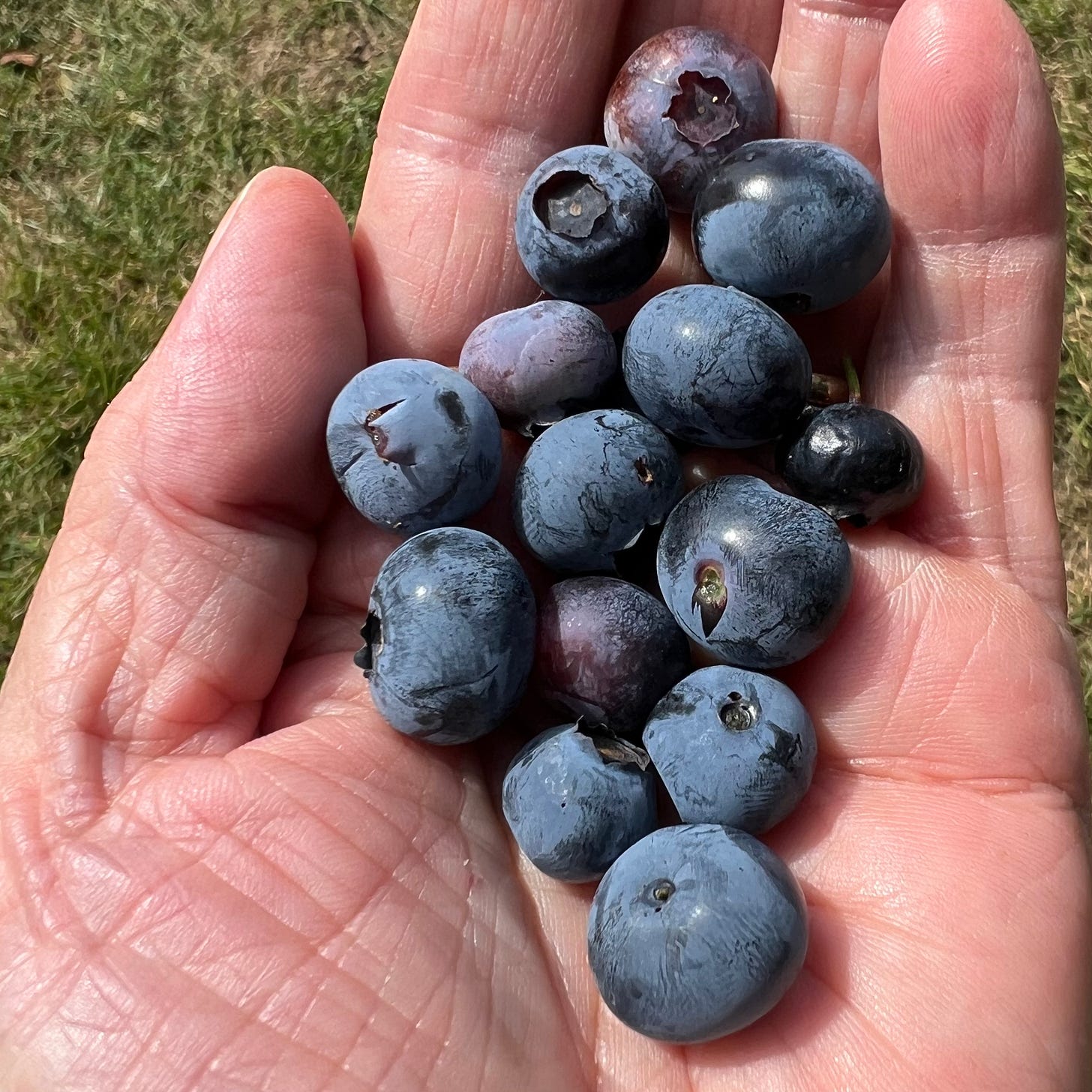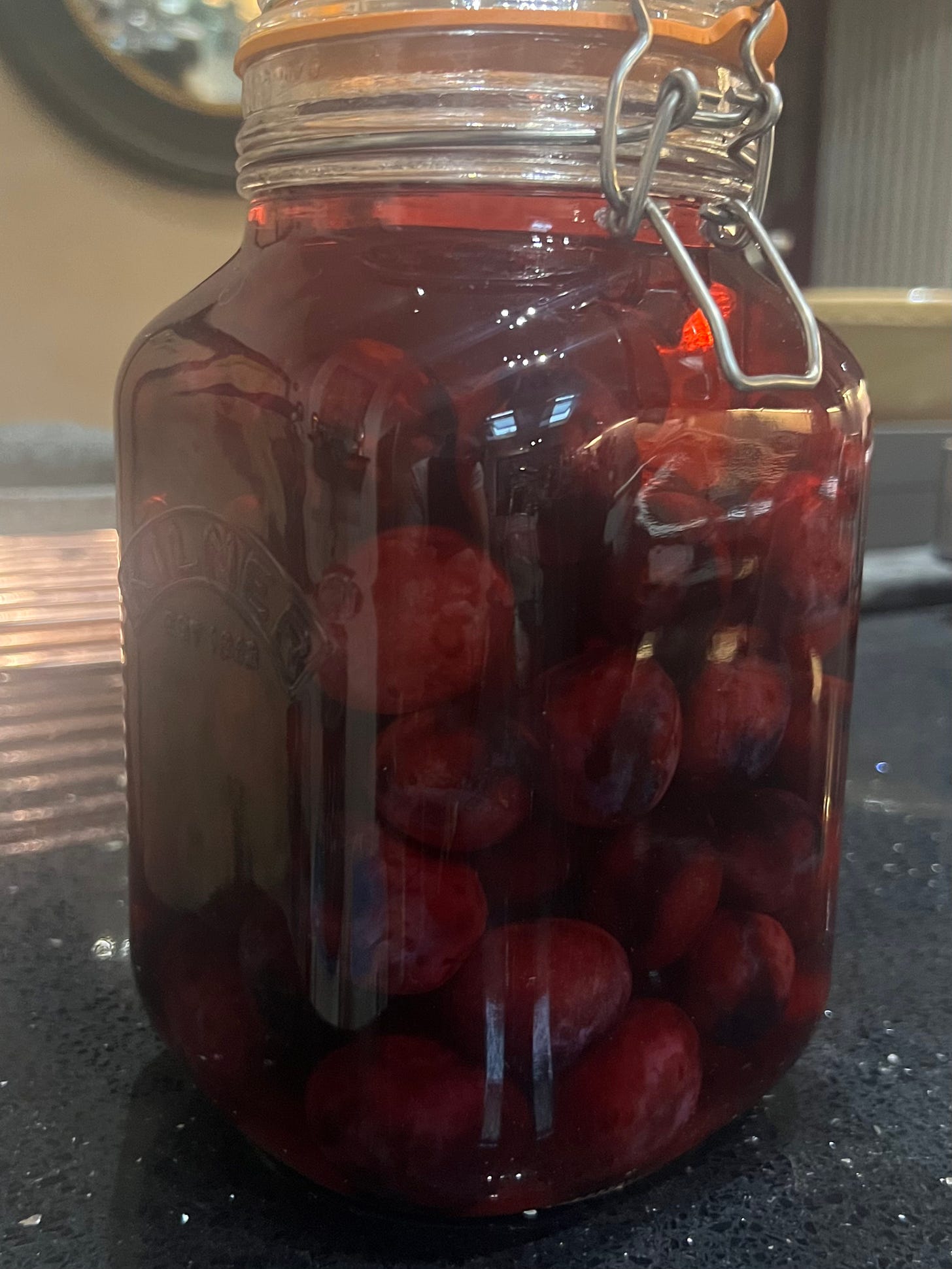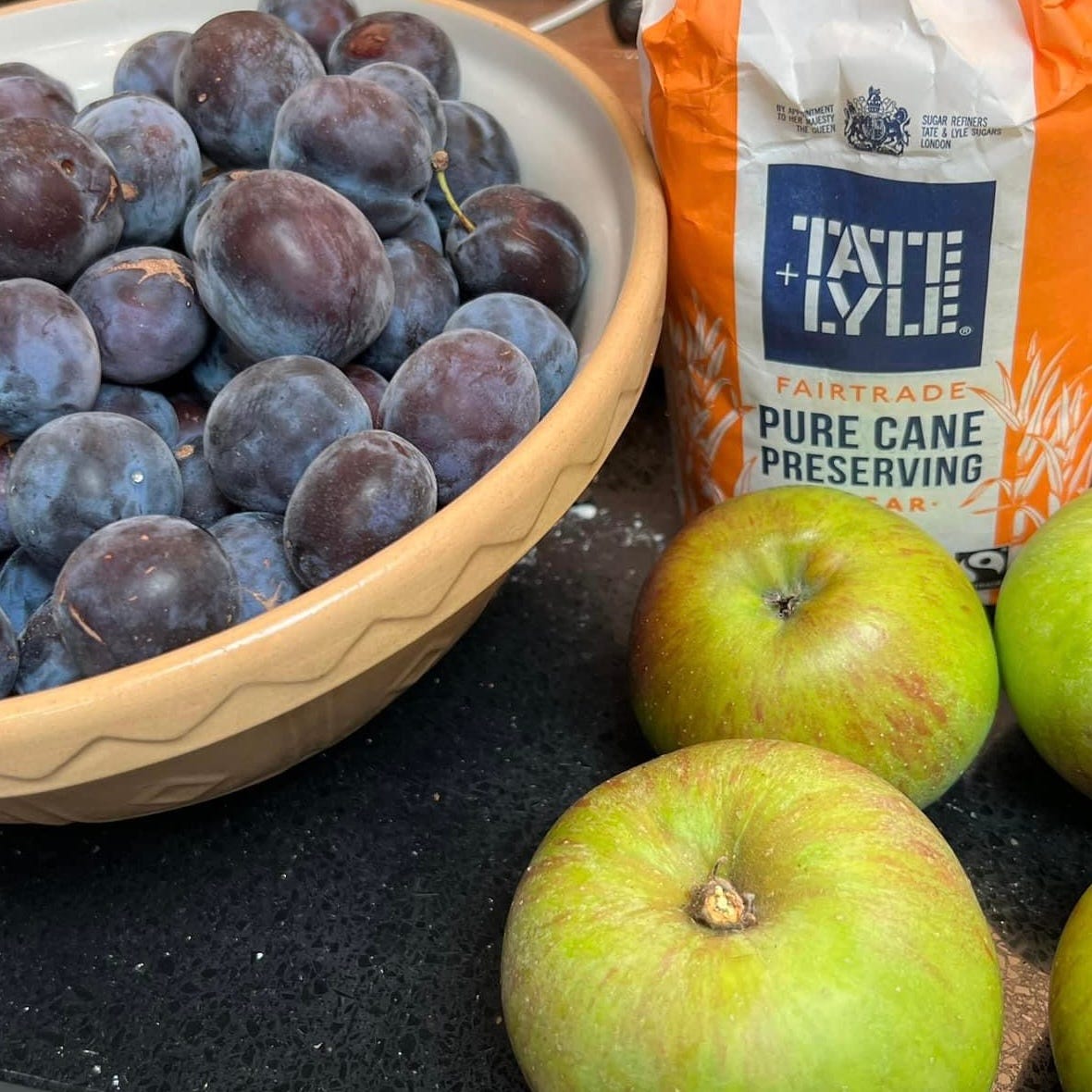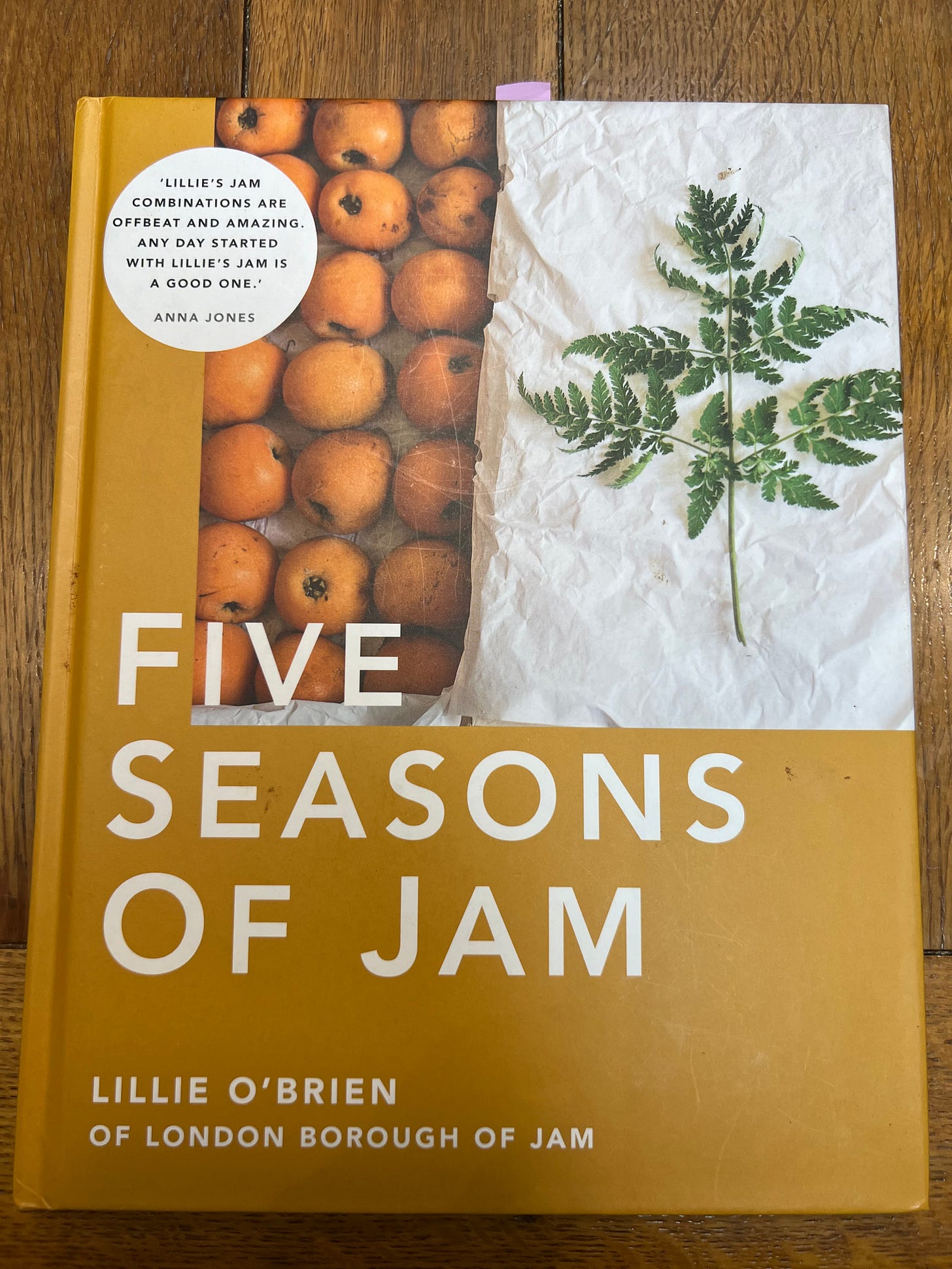Substack #3: The purple and the rain
Preserving all the purple things on a Bank Holiday weekend
The last weekend in August is a Bank Holiday (public holiday) here in the UK, where there’s the bonus of a Monday off, tacked onto the usual Saturday and Sunday.
It has been a standing joke in Britain for as long as I can remember that Bank Holiday weekend weather is always terrible. It quiet often is. People plan family barbeques, camping trips or long weekends of gardening and outdoor stuff, only for it to be raining stair rods and worthy of a score on the Beaufort Scale when the weekend comes.
This Episode #3 is all about harvesting the plot’s purple produce at this time in the season.
This week’s Plot Shot
The lush green of summer is shifting much faster now. The grass is dry and the cherry trees, always the first to sense an autumn nip in the air, have leaves turning yellow. The monster cardoon and its slightly shorter artichoke buddy are both brown and crispy, the last few flowers feeding the pollinators.
Of course, there were weather warnings in parts of the UK to mark the Bank Holiday.
Two parts especially hit with bad weather were Leeds and Reading, to be expected given the late summer custom of teenagers celebrating their GCSE results at the weekend’s festivals. Leeds had tents blown away and stages closed due to bad weather on the Friday, Reading was similar on Saturday. At least the tents blowing across the campsites before the festival had properly started made a change from them being ritually set on fire on Monday evening as the festival closes, which is also customary.
The blustery weather hit us in London on Saturday and served up plenty of windfall apples from our four trees. Each day on the plot now starts with picking up the windfalls, sorting good ones to keep and cook with, and ones with bruises and worms to leave for passers-by to take from a cardboard box outside the front door. At present rate, we appear to be keeping most of Walthamstow in apple pies and crumbles.
Current plot jobs
Windfall apples aside, I’ve been clearing the rhubarb bed and rescuing the blackcurrant bushes from being strangled by bindweed. The five blackcurrant bushes (Bens Connan, Sarek and Lomond) are new this year, and have had a small handful of berries each before the bindweed got out of control.
Bindweed is rampant this year *everywhere* on our site. Huge creeping red ropes of the stuff. Some of it is so strong that it could probably be used to lash teenagers’ tents to the ground at Reading or Leeds.
Harvesting now
Last week I gave the damsons a squeeze, but they were still rock hard. Risking the possibility of them being stolen, as the fruit were very visible with dark, almost-black skin and a blue bloom, I left them on the tree for another week.
After soaking up a few days of sun before the Bank Holiday weather hit, they’ve softened nicely. Time to pick. This year’s damson crop from one scruffy tree weighed in at almost 5 kilos.
There was also a small crop of blueberries from the variety ‘Orsorno’ The three blueberry bushes were also new this year, so I wasn’t expecting much from them. Two mouthfulls and they were gone.
Making and eating
We followed the booze tradition I mentioned in Substack #2 and sent a few of the damsons to meet their end in a litre of cheap gin. They’ll be drowning at least until Christmas, (probably longer if we forget where we’ve stashed the jar in a dark cupboard somewhere, which is also customary in this house).
The rest of the damson crop has had us firing up the home jam making production line.
After several attempts at making jam with damsons from our tree we are firmly of the view that Life Is Too Short to even think about stoning damsons. It is just messy and wastes loads of good fruit in the process. So we wash the fruit, pick off the stems and throw them whole into the preserving pan. It doesn’t take long for them to break down, and the stones are easy to fish out with a slotted spoon.
We only use small 190-200ml jars for our jam batches rather than the standard 1lb/380ml jars, as we divide up a base batch into a few different flavours. Our 5 kilo harvest of damsons has made a basic damson and apple jam, then damson and apple with Chambord black raspberry liqueur and damson and apple with red bird’s eye chilli.
I know some folks might roll their eyes at a damson and apple jam spiced up with red chilli, but it really works. Just the tiniest fingernail slices of the chilli - no seeds - and the jam has a warm kick, as well as the fruit flavour.
The apples keep on coming, so more went into apple and blackberry until we ran out of jars at 34 filled. In full transparency, there was one spillage accident which is par for the course in our kitchen - hot jam makes a mess like like a crime scene.
Local E17 talent slot
The absolute go-to person in north London for fabulous small batch handmade jams and marmalades is Lillie O’Brien, who runs London Borough of Jam in Clapton, London, E5.
Lillie’s lovely book on jam making, ‘Five Seasons of Jam’, got us started. I am still hankering after one of the beautiful Mauviel shallow copper pans she uses for her preserves, but every jam we’ve made from her recipes has been a wonder, and she is a genius at seasonal harvesting and unexpected flavour combinations.
Lillie makes a damson and black pepper jam which she says is ‘perfect with cheese, game meats & charcuterie’. I’m hoping our damson with chilli will be too.
Disreputable behaviour update
While we were cleaning up sticky traces of the crime scene in the kitchen, our fellow plot-holders were dealing with another produce theft back on site.
Luckily one of the wildlife cameras we use to capture footage of the on-site fox family and their cubs picked up someone stealing plums from a tree on one of our friend’s plots.
Story short, one police report and a crime reference number later, the police have confirmed that the footage is clear enough to be used as evidence of theft and have handed the case back to London Borough of Waltham Forest, the local council who run the site, to deal with. We’re now all waiting to see if the local Allotment Officer takes action and terminates the tenancy agreement of the person in the footage (another plot holder) who has been identified stealing produce.
Meanwhile I am keeping an eye on the medlar crop, as they are swelling up nicely now (last year’s fruit were stolen, just after the first frost), and Lillie at London Borough of Jam has a great recipe for medlars.

